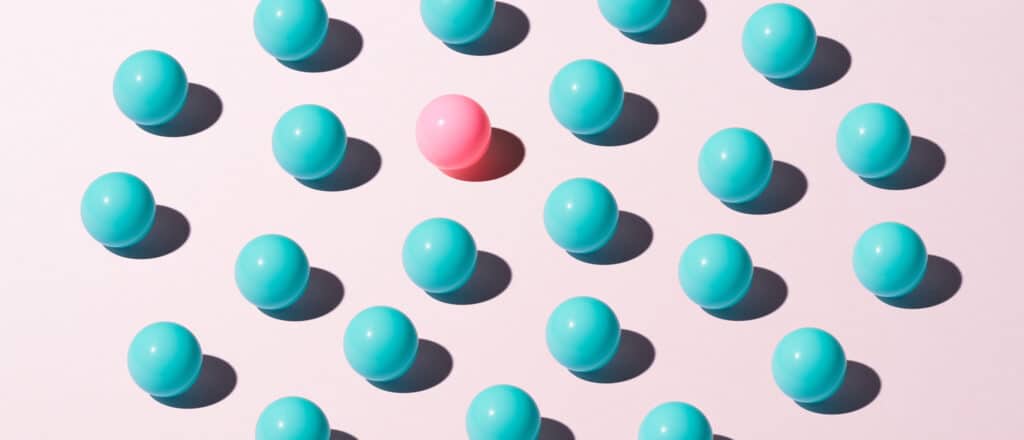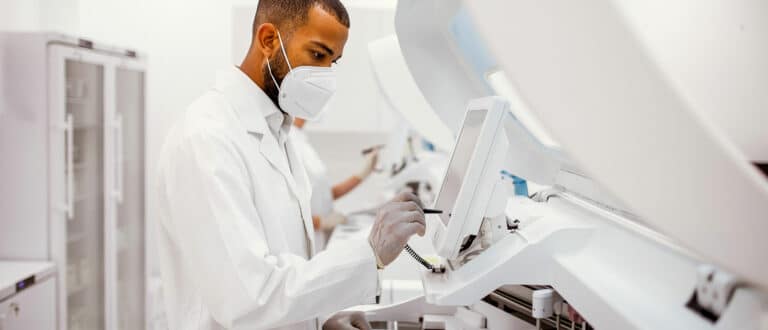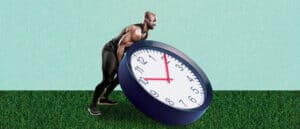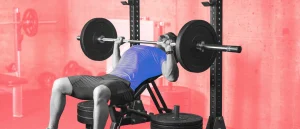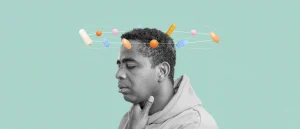Yes, Men Need Estrogen. But Having Too Much—or Too Little—Is a Problem.
You might think of it as a female hormone, but estrogen is critical for men’s health.
30-Second Takeaway
- Estrogen in men regulates sex drive, erectile function, and sperm production.
- If a man’s estrogen is too high, he may experience symptoms like erectile dysfunction, infertility, breast tissue development, and low testosterone.
- Conversely, when estrogen in men is too low, they may experience cognitive issues, excess body fat, loss of bone and muscle mass, and low libido.
When it comes to hormones, you might automatically think of testosterone as the male sex hormone and estrogen as the female sex hormone. There’s some truth to that, of course. But men need it, too, according to urologist and hormone specialist Amy Pearlman, M.D.
Here we dive into the role of estrogen in men, what happens when estrogen is out of balance, and how off-kilter estrogen levels can be treated.
What is Estrogen?
Estrogen is a sex hormone found in both men and women. Among other things, estrogen in men is important for helping regulate sex drive, erectile function, and sperm production.
It all comes down to a delicate balance. Guys definitely need estrogen, but high estrogen in men may promote certain diseases (1). And super-low estrogen in men isn’t great either.
In men estrogen exists in two forms, estradiol and estrone.
Estradiol
Estradiol is the main estrogen in men. About 20 percent of circulating estrogens are produced in the testes by way of an enzyme called aromatase after it breaks down testosterone. Additional estrogens come from the metabolism of T in fat tissue, skin, bone, and the brain (6). Estradiol in men is essential for regulating libido, erectile function, and sperm production.
Estrone
This type of estrogen is metabolized from androstenedione, mostly in the adrenal glands. Estrone is a weaker estrogen that the body can convert to estradiol when it needs it, so it may play a role in bone health, cognition, and erectile function.
About the Expert:
Dr. Amy Pearlman, M.D., is a board-certified urologist and hormone specialist with a sub-specialization in genital and urinary reconstruction, as well as male-specific quality of life concerns. She manages medical and surgical therapies for erectile dysfunction, penile curvature, testosterone deficiency, and genital reconstruction.
Hone’s at-home assessment measures estrogen, testosterone, and other biomarkers to determine if your hormones are balanced.
Should I check my hormones?
Why Do Men Need Estrogen?
“Estrogen plays a crucial role in men’s hormonal balance, contributing to bone health, cardiovascular function, and cognitive well-being,” Pearlman explains.
Brain health
Both men and women have lots of estrogen receptors in the brain. These receptors play various roles in regulating mood, sexual behavior, body temperature, and mental functioning.
A growing body of evidence supports the idea that estrogen may have protective effects against Alzheimer’s and other forms of dementia, as well as Parkinson’s. While more studies are needed, research increasingly suggests that estrogen may help stave off some of the effects of brain aging (2).
Sexual function
The delicate balance of testosterone and estrogen is also essential for getting and maintaining an erection (3).
Estrogen stimulates the production of nitric oxide, which is necessary for the dilation of blood vessels in the penis.
Research shows that estrogen is involved in sperm production.
Physical health
Estrogen also helps keep men physically healthy. One way it does this: it helps prevent bone loss (4).
One study found that without certain estrogen receptors, abdominal obesity increased, suggesting that estrogen may affect weight and fat formation by regulating energy production.
Normal Estrogen Levels in Men
According to the Endocrine Society, adult men should have an estradiol level of 10-40 picograms per milliliter (pg/mL) and an estrone level of 10-60 pg/mL.
Is High Estrogen in Men Bad?
It can be, if estrogen levels get too high. In men, testosterone and estrogen have to work in careful balance. Testosterone levels begin to decline around the age of 35, while estrogen levels tend to increase.
That said, it’s possible to have low T at the same time as high estrogen levels. Only about 20 percent of the estrogen in your body is produced as a by-product of testosterone in the testes. Other tissues, such as fat, produce the rest, which can convert testosterone to estrogen.Visceral fat (fat around the midsection) may drive estrogen production and deplete testosterone, for example.
Symptoms of high estrogen in men
If a man’s estrogen levels get too high, it can cause a number of symptoms, including:
Erectile dysfunction
Remember, estrogen stimulates nitric oxide production, which is key to being able to get and maintain an erection. However, too-high estrogen levels (especially if they occur alongside low T) can impact your ability to get an erection, according to Pearlman.
Infertility
Your body needs estrogen to produce sperm but high estrogen in men can slow down sperm production.
Gynecomastia
High estrogen can cause men to develop more breast tissue, a condition called gynecomastia, Pearlman says.
Low testosterone
High estrogen in men may further lower testosterone because of the hormone’s impact on something called the hypothalamic-pituitary-gonadal (HPG) axis.
The brain’s hypothalamus region produces and secretes gonadotropin-releasing hormone (GnRH). This hormone stimulates the pituitary gland to produce and release luteinizing hormone (LH) and follicle-stimulating hormone (FSH).
In men, LH triggers testosterone production in the testicles. But excess estrogen may cause trouble along this axis, including impacting T production—again creating a vicious cycle (5).
Other risks of high estrogen in men
An estrogen imbalance may put you at risk for other health concerns as well.
High estrogen may play a role in the development and progression of prostate cancer (6), according to several studies. It is also implicated in male breast cancer (7). And higher-than-normal estrogen has been associated with an increased risk of blood clots and pulmonary embolism, a clot that lodges in a lung artery and causes a blockage (8).
Hone’s at-home assessment measures estrogen, testosterone, and other biomarkers to determine if your hormones are balanced.
Low Estrogen in Men
Men can have lower than normal levels of estrogen, but it’s typically not something to worry about. However, in some cases low estrogen in men can cause similar symptoms to high estrogen in men, according to Pearlman, including:
- Cognitive issues
- Erectile dysfunction
- Excess body fat
- Infertility
- Mood issues
- Loss of bone mass
- Changes in muscle mass
- Loss of sex drive
What Causes Estrogen Imbalance?
Aging can gradually bring about a hormone imbalance. Testosterone levels can generally decrease as men age.
At the same time, men tend to lose muscle mass and may gain visceral fat as they get up in years (9). Low T is associated with weight gain and obesity—a problematic cycle (10).
Here’s why: Fat cells have been associated with a high expression of aromatase, the enzyme that converts testosterone to estrogen. If you gain weight, you likely have more aromatase converting your T into estrogen, which can cause testosterone levels to fall.
That’s why insulin resistance, prediabetes, and Type 2 diabetes are all risk factors for low T and high estrogen for men. All of these conditions drive fat storage, which ramps up estrogen production.
Environmental factors may cause an estrogen imbalance, as well. Every day, we encounter endocrine-disrupting chemicals (EDCs) from pollution, plastics, herbicides, pharmaceuticals in drinking water, flame retardants in furniture, and coatings on cookware. Even small amounts can be harmful (11).
Research is ongoing in this area, but studies indicate their potential impact on hormones: they may lower T levels, increase or lower estrogen levels, and also may wreak havoc on the HPG axis (12).
Some medical conditions are associated with changes in estrogen, including various cancers and autoimmune disorders. And so are certain medications.
Testing for High or Low Estrogen
You can test for an estrogen imbalance via Hone’s at-home analysis. It’s as easy as pricking your finger and mailing the sample to an accredited lab to get accurate results and a consultation from a board-certified physician. Your primary care doctor can also test your estrogen levels.
Treating High or Low Estrogen In Men
If a test shows you have an estrogen imbalance, simple lifestyle and diet changes may help. Managing your weight, eating a healthy diet, and limiting alcohol consumption can help you balance out your hormones.
Treating high estrogen
Red meat and dairy may contribute to an increase in estrogen levels, according to a few studies, so it may be wise to eat these in moderation. But more research is needed to determine which foods may raise or lower estrogen.
Sometimes high estrogen requires medical treatment. For example, when excess estrogen causes symptoms such as breast enlargement or tenderness, testosterone replacement therapy can often help.
In other cases, estrogen excess is treated with medications called aromatase inhibitors (such as Anastrozole), which stop testosterone from metabolizing into estrogen.
Treating low estrogen
Hormone replacement therapy can help treat low estrogen in men if the imbalance is caused by hypogonadism. If a test reveals low estrogen, you can talk to your physician about treatment options.
The Bottom Line
Although estrogen is the dominant sex hormone for women, it’s still crucial for men, in proper balance. An estrogen imbalance may occur because of low T, lifestyle factors like weight gain, environmental factors like pollution, and more.
An estrogen level that is out of the normal range can cause fertility issues, sexual dysfunction, and mood changes. Plus, it may put you at risk for other health issues. If you have concerns about your estrogen levels, get tested and have a consultation with a physician. Often, an estrogen imbalance can be treated so you can get back to better health and feel more like yourself.
FAQ
Does Soy Increase Estrogen Levels in Males?
Soy is one of those hotly debated topics in the health space. Some sources tout it as a healthy and beneficial source of protein, others claim it raises estrogen levels, and still others purport it to lower estrogen levels—and interestingly enough, all of this is true to a certain extent. However, that’s not a bad thing.
In a meta-analysis of 41 clinical studies (13), neither soy foods nor isoflavone supplements were found to have negative effects on male reproductive hormones, and neither alter measures of bioavailable T concentrations in men (14). Furthermore, it was found that soy does not exert feminizing effects on men, even at intake levels equal to and even considerably higher than typical (15).
What Foods Raise Estrogen Levels?
If you’re looking to raise your estrogen levels, research suggests that these foods can do just that:
- Dairy and meat
- Grains
- Soy products
- Legumes
What Foods Lower Estrogen Levels?
Want to lower your estrogen levels? These foods might be able to help:
- Soy products
- Cruciferous vegetables (like cauliflower, bok choy, brussels sprouts, and broccoli)
- Mushrooms
- Curcumin and turmeric
- Fiber-rich foods
References
1. Hammes S, Levin E. Impact of estrogens in males and androgens in females. Journal of Clinical Investigation. 2019;129(5):1818-1826. doi:10.1172/jci125755
2. Zárate S, Stevnsner T, Gredilla R. Role of Estrogen and Other Sex Hormones in Brain Aging. Neuroprotection and DNA Repair. Front Aging Neurosci. 2017;9. doi:10.3389/fnagi.2017.00430
3. Ramasamy R, Schulster M, Bernie A. The role of estradiol in male reproductive function. Asian J Androl. 2016;18(3):435. doi:10.4103/1008-682x.173932
4. Cauley J. Estrogen and bone health in men and women. Steroids. 2015;99:11-15. doi:10.1016/j.steroids.2014.12.010
5. Ottarsdottir K, Nilsson A, Hellgren M, Lindblad U, Daka B. The association between serum testosterone and insulin resistance: a longitudinal study. Endocr Connect. 2018;7(12):1491-1500. doi:10.1530/ec-18-0480
6. Bosland M. The Role of Estrogens in Prostate Carcinogenesis: A Rationale for Chemoprevention. PubMed Central (PMC). https://www.ncbi.nlm.nih.gov/pmc/articles/PMC1477605/. Published 2022. Accessed March 25, 2022.
7. Brinton L, Key T, Kolonel L et al. Prediagnostic Sex Steroid Hormones in Relation to Male Breast Cancer Risk. Journal of Clinical Oncology. 2015;33(18):2041-2050. doi:10.1200/jco.2014.59.1602
8. Holmegard H, Nordestgaard B, Schnohr P, Tybjaerg-Hansen A, Benn M. Endogenous sex hormones and risk of venous thromboembolism in women and men. Journal of Thrombosis and Haemostasis. 2014;12(3):297-305. doi:10.1111/jth.12484
9. Ahern T, Wu F. New horizons in testosterone and the ageing male. Age Ageing. 2015;44(2):188-195. doi:10.1093/ageing/afv007
10. Lee H, Lee J, Cho B. The Role of Androgen in the Adipose Tissue of Males. World J Mens Health. 2013;31(2):136. doi:10.5534/wjmh.2013.31.2.136
11. Endocrine Disruptors. National Institute of Environmental Health Sciences. https://www.niehs.nih.gov/health/topics/agents/endocrine/index.cfm. Published 2022. Accessed March 25, 2022.
12. Rodprasert W, Toppari J, Virtanen H. Endocrine Disrupting Chemicals and Reproductive Health in Boys and Men. Front Endocrinol (Lausanne). 2021;12. doi:10.3389/fendo.2021.706532
13. Reed, Katharine E et al. (2021). “Neither soy nor isoflavone intake affects male reproductive hormones: An expanded and updated meta-analysis of clinical studies.”
14. Hamilton-Reeves, Jill M et al. (2010). “Clinical studies show no effects of soy protein or isoflavones on reproductive hormones in men: results of a meta-analysis.”
15. Messina, Mark. (2010). “Soybean isoflavone exposure does not have feminizing effects on men: a critical examination of the clinical evidence.”



